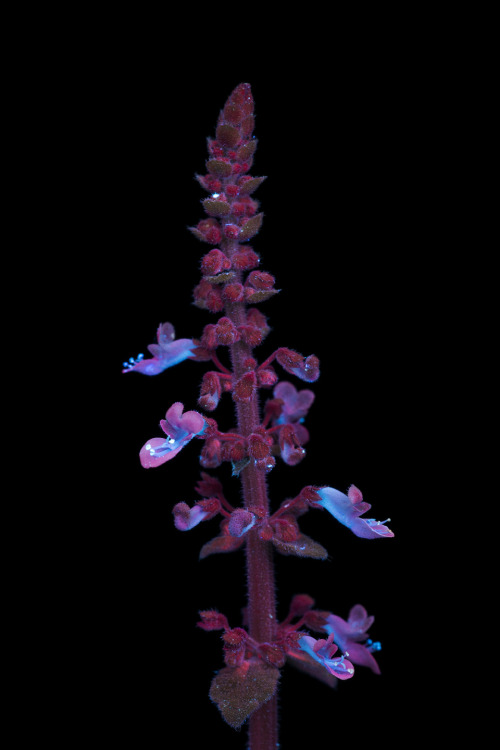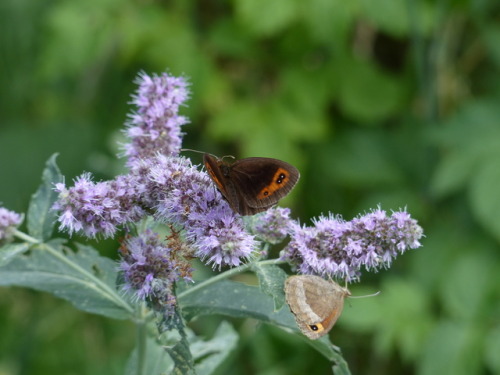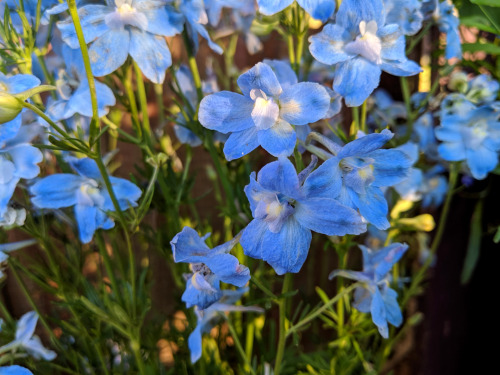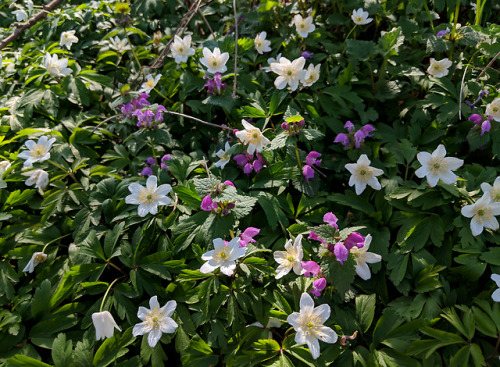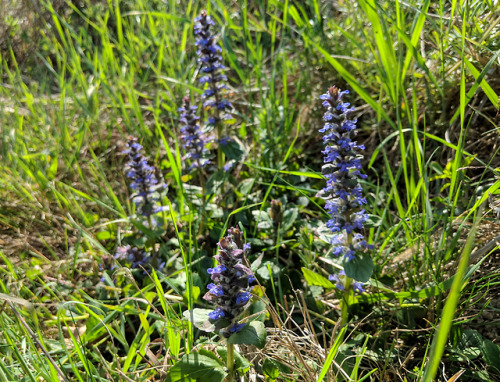#lamiaceae
Plectranthus parviflorus, known by Alaala wai nui in Hawaiian, is a plant native to the Hawaiian islands as well as other places throughout the Oceania region. This plant from the mint family is one of the easiest grown natives in Hawaii and once established can actually become somewhat weedy, readily growing in dry conditions, even in sidewalk cracks and the crotches of trees making it semi-epiphytic. The leaves, stem, buds, and ultimately calyx are all fuzzy which together with the ease of growing and willingness to flower make it popular as an ornamental native species.
Post link
LAMIACEAE FAMILY (mint): This family has square stalks with opposite leaves. They are distinctively aromatic.
Post link

Ocimum basilicum 11.07.20
Ground-ivy, Glechoma hederacea (Lamiaceae). This Eurasian intro is a common weed in our area. The specific epithet “hederacea” means “ivy-like”. Though, Ivy (the genus Hedera) is completely unrelated to this plant and in the family Araliaceae.
#glechomahederacea #groundivy #lamiaceae #mint #plants #botany #plantid #plantsofinstagram #plantphotography (at Carnation, Washington)
https://www.instagram.com/pnw_botany/p/BxFmTsWFxx5/?utm_source=ig_tumblr_share&igshid=12jmoz6m089r
Post link
Cooler weather has me thinking about hot tea again. This time around I decided to go with something I’ve already tried and know that I like. Despite the fact that lemon balm can be quite abundant and readily available, I don’t really drink it that often. Yet, considering claims made regarding its calming nature, this is definitely the year to have it.
lemon balm (Melissa officinalis)
Melissa…
True Blue Flowers at the allotment /part 2
I’ve complained over and over about how I missed having the time to write and share plant stuff, but it feels so odd I’m now back at it only because we’re on quarantine, and suddenly have ALL the time I could possibly need.
This said, I thought I’d go on with the true blue flowers series I started many moons ago, so here you have two plants I bought last summer in the garden centre where I work. They are unrelated, but the colour of their flowers matched in a lovely way.
The first is Salvia patens ‘Cambridge Blue’, or gentian sage, a gorgeous cultivar of the Mexican herbaceous perennial species. It flowers profusely through summer well into autumn forming a neat, aromatic clump and it’s best treated like a dahlia, lifting the fleshy tuberous root system before winter and storing it away from hard frost. Bees obviously love the large lipped flowers.
The second is Delphinium grandiflorum ‘Summer Blues’, or Siberian larkspur, a short-lived herbaceous perennial much different from the large and sturdy larkspurs part of the D. elatum species. It doesn’t grow much taller than 30 or 40 cm and both foliage and flowers are quite dainty, but extremely vibrant. The blossoms, opening over several weeks through summer, look as if they had been painted with watercolours and go on to produce a good number of seeds to ensure self-sowing.
Post link
Lamium purpureum, Lamiaceae & Anemone nemorosa, Ranuncolaceae
I have already written about the delicate wood anemone before, but never about the ever so common purple dead-nettle: I generally try to single plants out for photos, but couldn’t walk away from this gorgeous combination.
On the sloping side of a dry irrigation ditch, in the dappled shade of a row of tall trees, the anemone’s dissected foliage was covering the ground in a dense mat, out of which were poking the bright pink lipped flowers of the dead-nettle.
The reason why this herbaceous perennial bears that common name is due to the superficial similarity between its leaves and those of the unrelated stinging nettle (Urtica dioica), however its hairs won’t cause any harm. The top part of the plant is generally a rich burgundy-purple colour, hence the other part of the common name and the species name, but it is a variable plant and looks just green when growing in a more shady position, as in these photos.
It is often considered an undesirable plant in a garden setting, some might call it a “weed”, but I let it grow in my allotment for two main reasons. It’s in bloom from early spring often until late autumn, sometimes even longer in a sheltered position, and its flowers are loved by pollinators, especially bumblebees. Its young shoots are also edible and it’s a pot herb with an interesting flavour, so I see it as a bonus leaf vegetable.
Post link
Ajuga reptans, Lamiaceae
However common and widespread bugle might be across Europe and the British Isles, I don’t recall ever seeing it in the wild before finding three colonies on the edge of a field near my hometown in northern Italy, and I would remember because I just love its dense racemes of blue flowers. Due to its creeping habit and small leaves, it’s definitely easy to miss unless in bloom though.
It’s evergreen, forms a dense groundcover, flowers beautifully for a few months attracting wildlife and it’s extremely tolerant of full shade and moist ground, so I’ve lost count of the times I’ve invited customers to try it in difficult, dark spots where little else would thrive. Here below are a couple of common cultivars currently in bloom at the garden centre where I work:
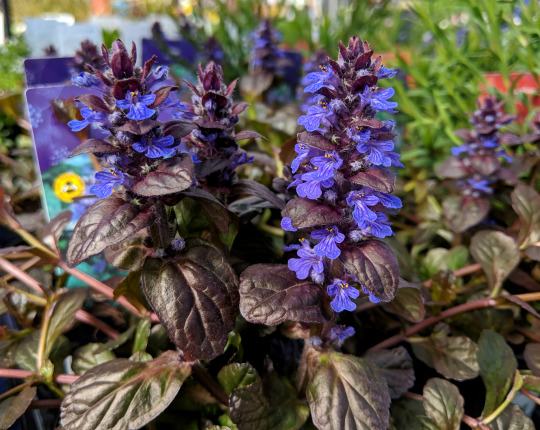
A. reptans “Braunherz” has dark, purply foliage and stems which provide amazing contrast to the flowers. Seems to do well even with prolonged, hard frost and in full sun. I have some growing at my allotment and it’s just beginning to flower.

A. reptans “Burgungy Glow” has foliage variegated in cream and pink, with dark, bluish flower stems. Not as tolerant of the extremes, as often happens with variegated varieties. The flower spikes make me think of a picture to which the “invert” filter has been applied, as if the flowers should actually be yellow and the foliage bluish-green, but I’ll never complain about a blue flower!
Post link

